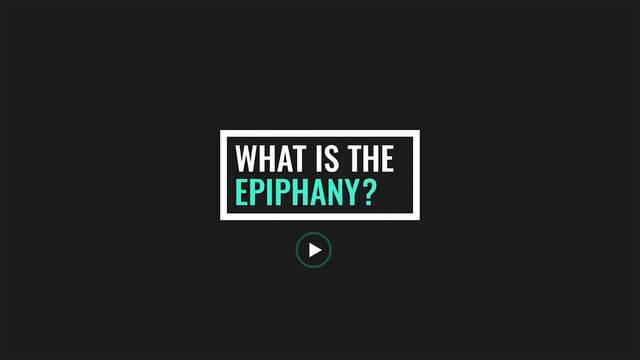You can also check out the accompanying webinar below. Tips for creating your own: Create a coordinated digital deployment campaign around your video to help it reach the greatest audience possible Create mini teasers you can post to each platform to get people interested Like the demand generator, the social cyclone’s main purpose is to build brand awareness. Tips for creating your own: Post natively when possible—social platforms give preferential treatment to native content Target your content as narrowly as possible to ensure the best audience for your videos Funnel Stage: Capture Now that you’ve piqued your audience’s interest, you want to get them intrigued by your product or solution. Make sure to make yours distinct, like this example from Epipheo: Tips for creating your own: Make your customer the hero of the story—your product is just the tool that gets them there Include relevant calls-to-action (CTAs) to push your viewer to the next stage in the funnel Your whitepapers and thought leadership content are awesome, informative resources. Tips for creating your own: Created a dedicated video resource hub on your website so customers can easily access your video content in one place At this point your viewers know about you and what you do—now you want to educate them about your solutions. Ideally, this webinar should provide a framework for understanding the problems faced by people working in your industry. Focus on showing your customers that you understand their perspective and by the end of the webinar they’ll be clamouring to know more about how you solve the problems they deal with every day. At this stage in the funnel, it’s okay to talk more about your company and solution. This is a lot of information, so for now, think about one funnel stage or video type to focus on. Are you already using some of these video types in your funnel?
Astute marketers know that the current video marketing landscape is fragmenting. Where you used to be able to employ a single video or group of videos for all funnel stages, that’s not going to cut it anymore. Your buyers want curated content, catered for the exact questions and concerns they’re thinking about at the time. That’s a lot of pressure—but it’s also a huge opportunity for marketers on the cutting edge. In this article, we’ll highlight 8 types of B2B video and where to use them in your funnel to ensure that your customers get the best possible buying experience from your brand.
You can also check out the accompanying webinar below.
Funnel Stage: Attract
The attract funnel stage is all about building brand awareness. You don’t need to worry about sealing the deal with your future customers just yet—you just want to let them know that you’re out there. There are two key types of B2B video you can leverage during this funnel stage to ensure that you reach the greatest possible audience for your product.
Demand Generator
You’ve definitely seen this kind of video before. It’s the brand video with a fun twist. Think Taylor Swift running on a treadmill to advertise Apple Music.
|
|
The purpose of a demand generator video is first of all to entertain—and then educate. You want to pique interest in your brand and leave people wanting to find out more.
Tips for creating your own:
- Create a coordinated digital deployment campaign around your video to help it reach the greatest audience possible
- Create mini teasers you can post to each platform to get people interested
Like the demand generator, the social cyclone’s main purpose is to build brand awareness. However, the social cyclone should be hyper-targeted to the platform you plan on sharing it to in order to get the best results. Your videos should be tailored to the platform both in terms of technical attributes and the platform’s audience—that means making your videos square on Facebook and sharing educational video content on LinkedIn rather than, say, Twitter.
For a great example of content that’s well-suited to its platform and audience, I highly recommend checking out Gary Vaynerchuk’s educational videos on LinkedIn.
Tips for creating your own:
- Post natively when possible—social platforms give preferential treatment to native content
- Target your content as narrowly as possible to ensure the best audience for your videos
Funnel Stage: Capture
Now that you’ve piqued your audience’s interest, you want to get them intrigued by your product or solution. Sure you’re able to make them laugh, but is your pitch compelling enough to get them interested in exploring whether your solution is right for them? The videos we’re going to talk about next will help you do just that.
In essence, an explainer video is a video that provides an overview of a problem and how your product provides a solution. The video itself can be animated or live action—what makes it “premium” is that it pattern interrupts in some way. Given that explainer videos are so widespread, if customers feel like they’ve seen your video before, they’ll click away. Make sure to make yours distinct, like this example from Epipheo:

Tips for creating your own:
- Make your customer the hero of the story—your product is just the tool that gets them there
- Include relevant calls-to-action (CTAs) to push your viewer to the next stage in the funnel
Your whitepapers and thought leadership content are awesome, informative resources. But let’s…

COMMENTS